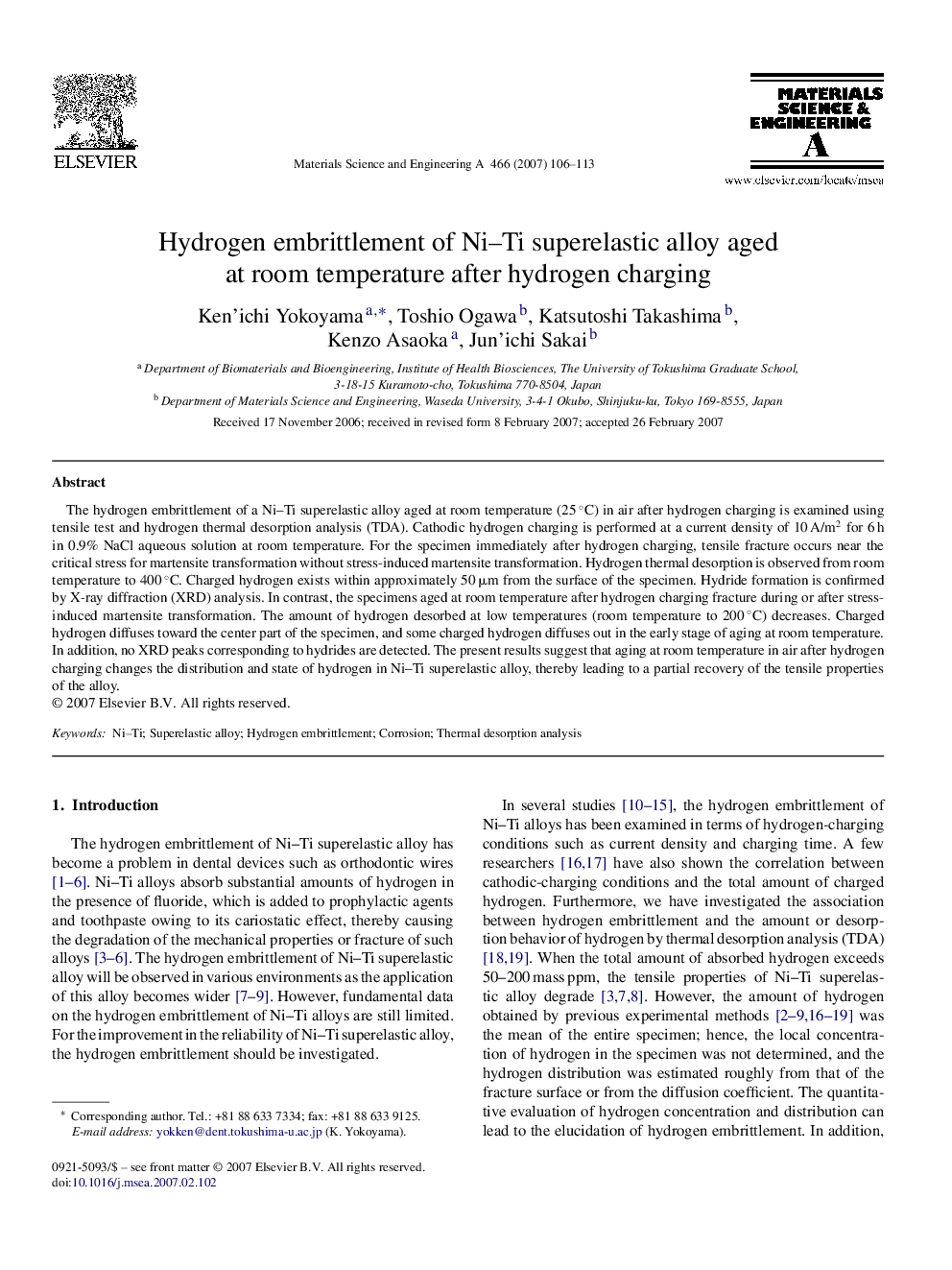| Article ID | Journal | Published Year | Pages | File Type |
|---|---|---|---|---|
| 1583645 | Materials Science and Engineering: A | 2007 | 8 Pages |
Abstract
The hydrogen embrittlement of a Ni-Ti superelastic alloy aged at room temperature (25 °C) in air after hydrogen charging is examined using tensile test and hydrogen thermal desorption analysis (TDA). Cathodic hydrogen charging is performed at a current density of 10 A/m2 for 6 h in 0.9% NaCl aqueous solution at room temperature. For the specimen immediately after hydrogen charging, tensile fracture occurs near the critical stress for martensite transformation without stress-induced martensite transformation. Hydrogen thermal desorption is observed from room temperature to 400 °C. Charged hydrogen exists within approximately 50 μm from the surface of the specimen. Hydride formation is confirmed by X-ray diffraction (XRD) analysis. In contrast, the specimens aged at room temperature after hydrogen charging fracture during or after stress-induced martensite transformation. The amount of hydrogen desorbed at low temperatures (room temperature to 200 °C) decreases. Charged hydrogen diffuses toward the center part of the specimen, and some charged hydrogen diffuses out in the early stage of aging at room temperature. In addition, no XRD peaks corresponding to hydrides are detected. The present results suggest that aging at room temperature in air after hydrogen charging changes the distribution and state of hydrogen in Ni-Ti superelastic alloy, thereby leading to a partial recovery of the tensile properties of the alloy.
Related Topics
Physical Sciences and Engineering
Materials Science
Materials Science (General)
Authors
Ken'ichi Yokoyama, Toshio Ogawa, Katsutoshi Takashima, Kenzo Asaoka, Jun'ichi Sakai,
